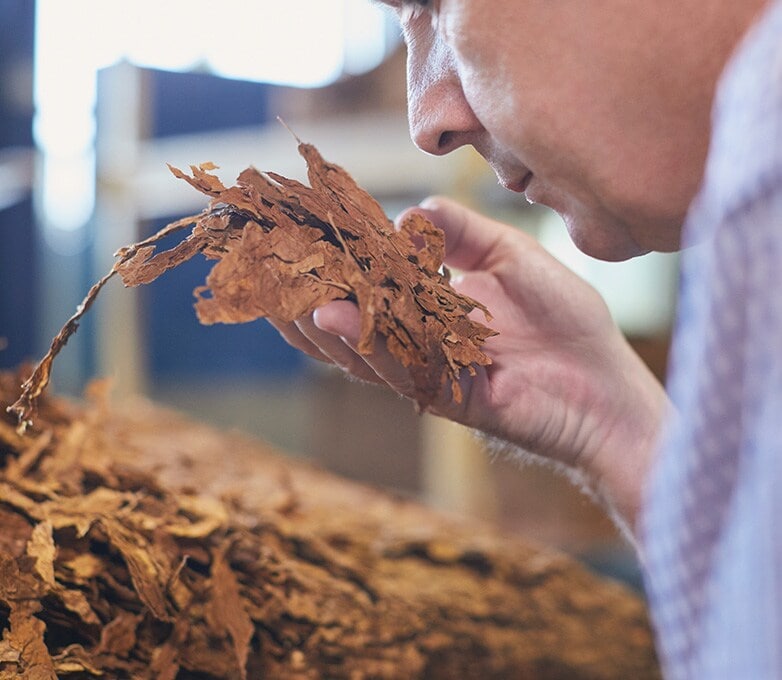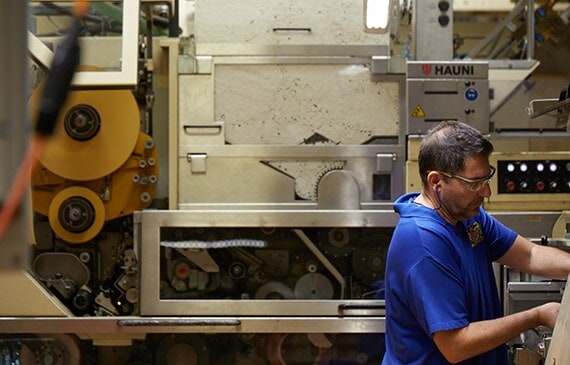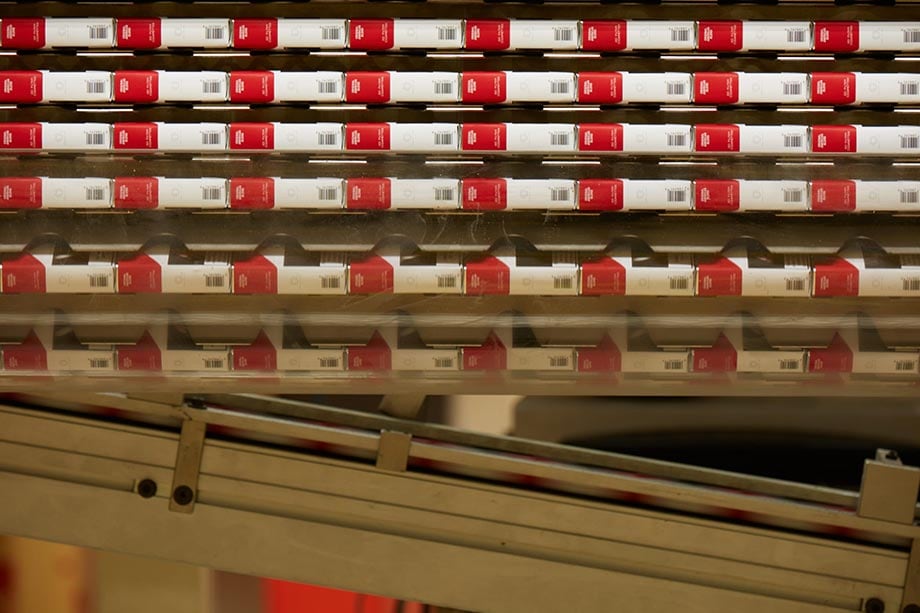Our cigarettes are produced in factories across the world, and each brand has its own unique recipe. Cigarettes are made from:
- Tobacco: This is selected according to specific blends and leaf grades to maintain the consistency and distinctive character of each brand.
- Ingredients: These are added to many of our brands to keep the tobacco moist, aid the manufacturing process, replenish natural sugars lost during leaf curing,
and contribute to each brand’s unique taste.
- Non-tobacco materials: These include cigarette papers and filters.
How are cigarettes made?
We operate 38 production facilities and produce over 700 billion cigarettes each year. Cigarettes are produced in factories around the world by processing the tobacco leaf, manufacturing the cigarettes, and preparing the final pack. Learn more below.
Does PMI add ingredients to cigarettes to make them more addictive?
No. It’s nicotine that makes cigarettes addictive. Nicotine exists naturally in tobacco, which is the main ingredient in our cigarettes.
We make a wide variety of international and local cigarette brands, and sell fine-cut tobacco, roll-your-own, make-your-own, cigars, cigarillos, and pipe tobacco.
We disclose the ingredients that go into each brand of our combustible tobacco products. Use our ingredient finder to find out what’s in each one. Start by selecting the country where the product is sold.
Product ingredient finder

Monogram inks
Cigarette papers
Ingredients added to the tobacco
Tipping papers
Filter
Filter adhesives
Filter wrap
Added Ingredients
Ingredients in a specific brand
The information disclosed on the Philip Morris International website is provided on a voluntary basis by the company for consumer information purposes only. This information is not suitable for use by regulatory authorities. Philip Morris International provides official reports to regulatory authorities in line with applicable legal requirements.
We aim to strike a reasonable balance between providing detailed information about the ingredients in our products while protecting our proprietary recipes from disclosure to competitors or counterfeiters. This is why we merge similar product portfolios of different markets together. In this case, the merged markets, grouped by region, are clearly indicated when navigating the section “Components” or the section “Added ingredients.” The “Ingredients in a specific brand” section remains market-specific.






